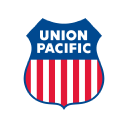Union Pacific Earnings Will Show Agriculture And Coal Weakness
Union Pacific (NYSE:UNP) is going to release its Q2, 2012 results on 19th July and we believe, the results could be weak as the decline in coal freight volumes is likely to more than offset the growth in intermodal freight and automotive commodities freight during the quarter. Intermodal freight continued its steady growth in Q2 with a healthy 4% growth compared to Q2, 2011, while coal volumes dipped by a staggering 11.7%, as per data reported by Association of American Railroads. [1] Agricultural freight also had a downward slide because of reduced grain volumes, but, automotive sector benefited heavily from a 24.6% y-o-y growth in the motor vehicle & parts freight.
Our price estimate for Union Pacific stands at $121, almost in line with the current market price.
 See our full analysis for Union Pacific here
See our full analysis for Union Pacific here
- Should You Pick Union Pacific Stock At $250 After 20% Gains Last Year And Q4 Beat?
- Up Over 2x In 2023 Is AMD A Better Pick Over Union Pacific Stock?
- Should You Pick Union Pacific Stock After An 18% Fall In Q3 Earnings?
- What To Expect From Union Pacific’s Q3 After Stock Up Only 2% This Year?
- Should You Pick Union Pacific Stock Over McDonald’s?
- Earnings Beat Ahead For Union Pacific Stock?
Understand How a Company’s Products Impact its Stock Price at Trefis
Intermodal to drive growth
Overall U.S. freight rail carloads has been declining quarter over quarter while intermodal freight has gradually grabbed more of the freight share at the expense of U.S. rail traffic. During Q1, total carloads declined by 3.2%, where as intermodal volumes increased by 4%. This transition in U.S. freight traffic from railroad to intermodal is going to have a significant impact on UNP’s Q1 earnings as well as value because UNP derives nearly 21% value from its Intermodal freight division. Its imperative for UNP to invest heavily on intermodal facilities. UNP has an advantage to be in a capital intensive business where it faces no direct competition in the regions it operates in the U.S. We expect UNP to report sound revenue growth in intermodal freight in Q2 riding on rising volumes in intermodal freight.
Agriculture and Coal could hurt
Results in agricultural freight is likely to be affected adversely particularly due to fall in grain carloads. Grain transportation is either for animal feed or for export. Export demand declined significantly during the quarter. Besides grains, coal demand also declined significantly due to low natural gas prices that led power producers to increasingly switch to gas-fired plants from coal-fired. Grain carloads declined by 13.2% during the quarter. We expect, these two divisions – agriculture and coal – will hurt UNP the most in Q2. Drag the trend line to understand the impact of decline in coal volumes on UNP’s stock price.
Reduction in oil prices during the quarter will help margins expand as fuel cost is one of the largest expense for a railroad company.
Long-term prospects intact
The U.S. GDP and freight rail traffic have traditionally demonstrated close correlation. However, rail freight traffic tends to be more volatile compared to the economy as a whole. 70% of the U.S. GDP is based on personal spending and any improvement in the U.S. economy is a direct reflection of improved consumer goods sales. First quarter saw the U.S. GDP grow by only 1.9%, but according to general consensus, performance in Q2 and later is expected to be better than that in Q1. Now lets discuss some specific trends like coal. The domestic coal demand is likely to increase gradually as gas prices increase and attractiveness of coal revives, which might take a year or two. Nevertheless, if domestic coal demand remains subdued, exports will drive volumes. Although, in this quarter UNP may report discouraging earnings, but long term prospects for the company are intact. In the long term, UNP will have to look ahead of coal freight to drive growth. Presently, energy commodities freight’s contribution to UNP’s value is nearly 21%, which is the second largest value contributor among all divisions.
Notes:- AAR Rail Time Indicators Report, aar.org [↩]
